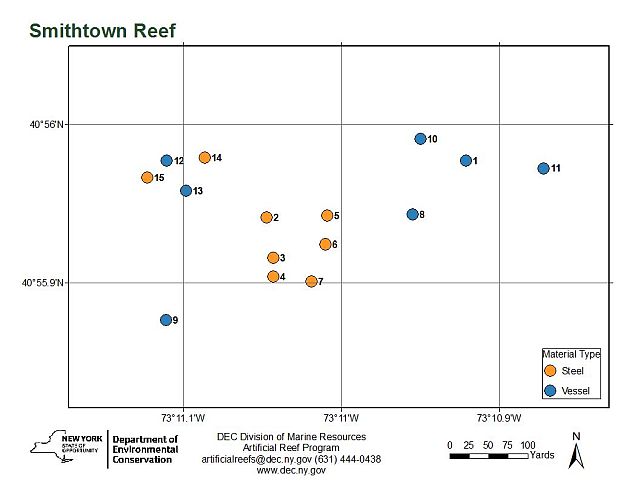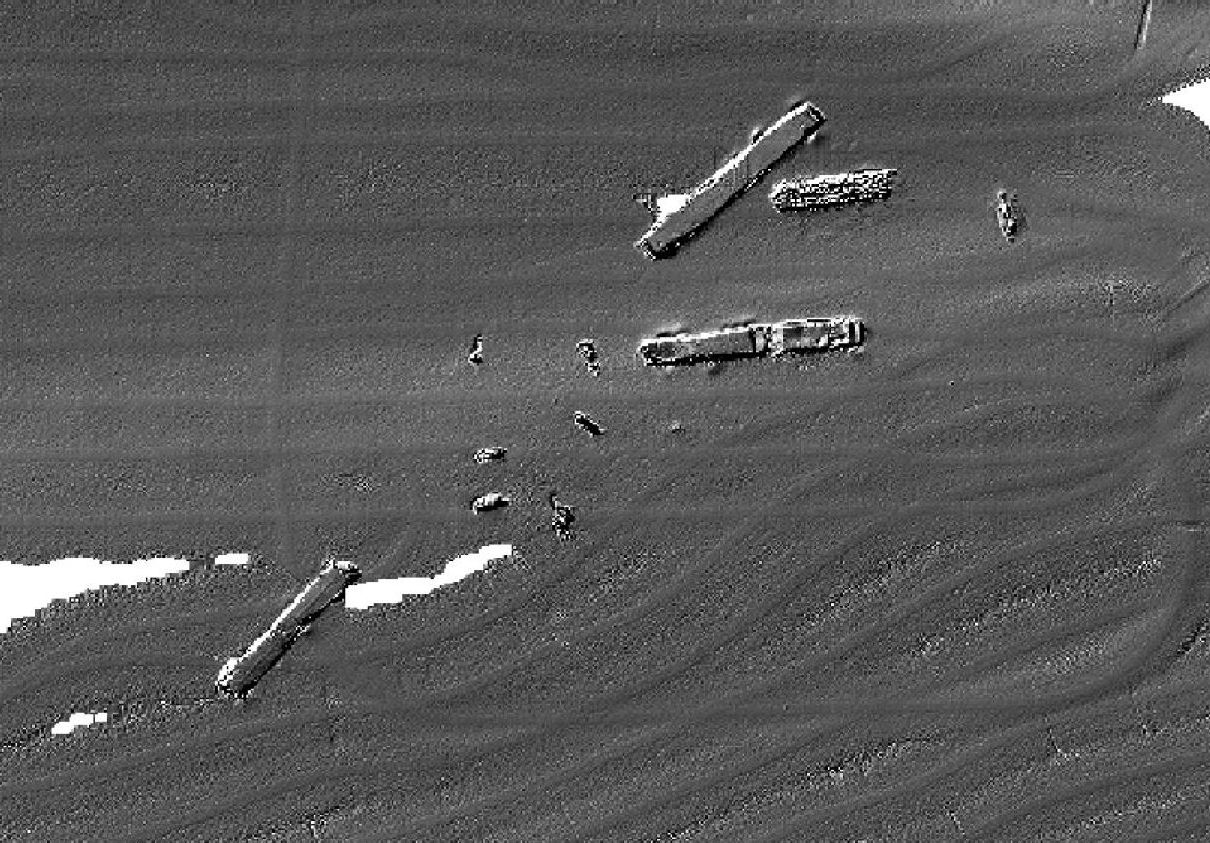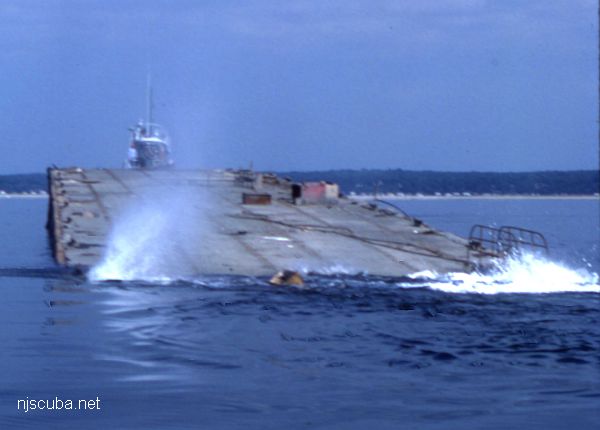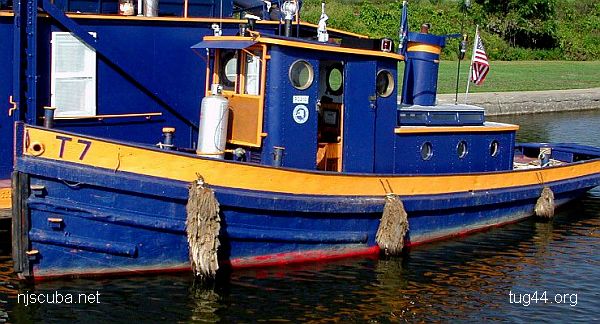Smithtown Artificial Reef
Depth: 30 - 40 ft
1.6 nautical miles northwest of Stony Brook Harbor

Not Shown:
- 22,000 automobile tires


All manner of concrete, steel, and stone rubble from dredging, demolition projects, and other construction is used as artificial reef materials. This material is generally available at very low cost or free from construction companies who are more than happy to get rid of it. Transportation costs determine where this material is used by the Reef Program.
More: Rock & Rubble ...

- Type:
- artificial reef, barges
- Depth:
- 38 - 40 ft
| Name | Description | Sunk | GPS |
| 190’ wood | 1979 | 40°55.977' -73°10.921' |
|
| 350’ steel | 1981 | 40°55.943' -73°10.955' |
|
| 270’ wood | 1982 | 40°55.876' -73°11.111' |
|
| 340’ steel | 1984 | 40°55.991' -73°10.950' |
|
| 80’ wood | 1984 | 40°55.972' -73°10.872' |
|
| 80’ steel (226) | 2021 | 40°55.970' -73°11.048' |
More: barges - Smithtown Artificial Reef ...

- Type:
- artificial reef, tugboat
- Built:
- late 1920s?
- Specs:
- ( 40 ft )
- Sunk:
- Thursday July 19, 2018 - Smithtown Artificial Reef
- Depth:
- GPS:
- #7: 40°55.977' -73°11.110'
#8: 40°55.958' -73°11.098'
More: Canal Tenders 7 & 8 ...
Artificial Reef Charts, Charts, Long Island Sound Dive Sites, New York Artificial Reef Charts, New York Dive Sites,
Long Island Sound averages 60 ft in depth, with the greatest depth of over 300 ft at the eastern end. Tidal effects are strongest at the narrow western end, where all the inrushing water flow piles up and makes tidal variations of up to 7 ft. Strong tidal currents are also prevalent, and visibility tends to be poorer than the open ocean, especially at depth.
More: Long Island Sound Dive Sites Chart ...
More: Long Island West Dive Sites Chart ...
